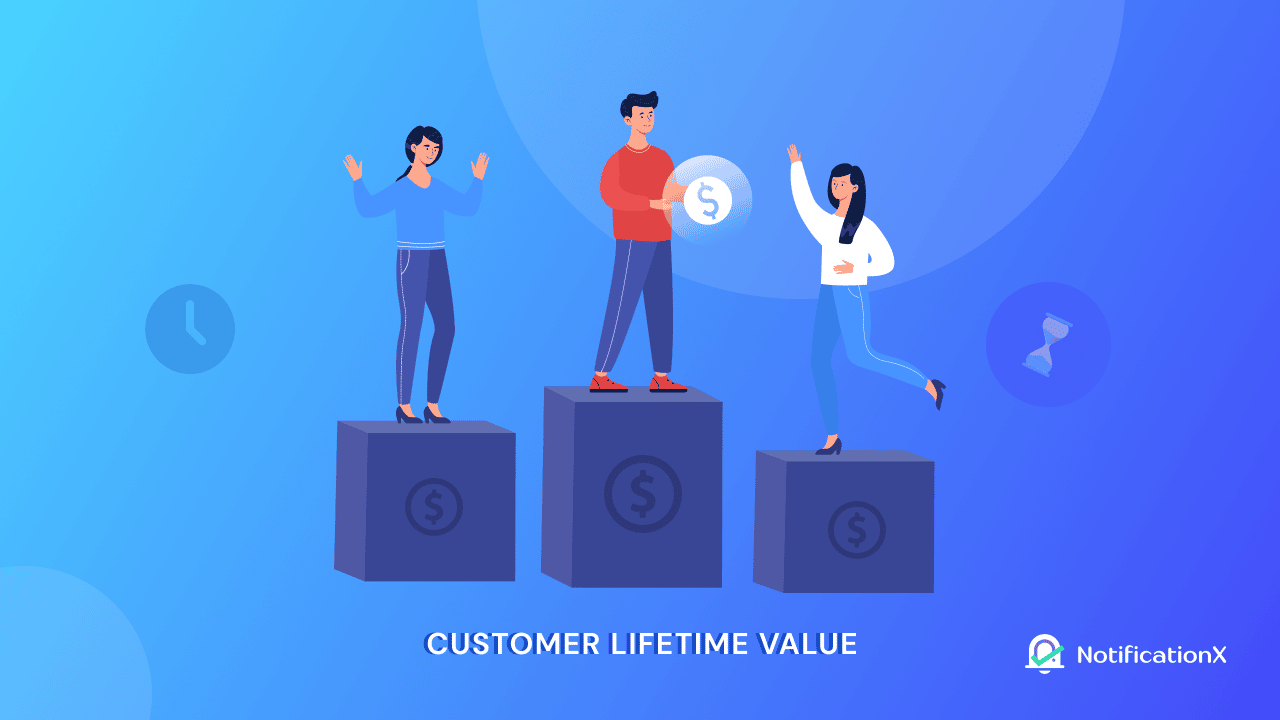Do you want to ensure that your company achieves the highest levels of success and conversion? It’s high time to get familiar with monitoring, carefully examining, and then expertly employing the growth data. Customer Lifetime Value, or CLV, is one of the crucial growth indicators for your business. From this blog, you are going to learn how to calculate customer lifetime value and how to track it for your business.
Customer Lifetime Value: What It Is & How To Measure It?
Customer Lifetime Value, according to a definition of Tech In Asia, is the amount of money you anticipate for each customer to spend on your product or service. It helps you to understand the amount of revenue generated during a customer’s lifetime with your business.
Customer lifetime value (CLV) measures the value of a customer to your company over the course of their relationship with you. To calculate CLV, multiply the average annual income per customer by the average number of years they remain as a customer of your company. From the calculation, you can then find out the cost of acquiring a single customer.
It is an important ROI metric that points out the expected revenue of a business from a single customer over the lifetime of his business relationship. It might be a bit overwhelming to efficiently predict and monitor the CLV. You can gunakan kalkulator ini to simplify the procedure with the help of many easy formulas.
👉🏻 Formula 1
CLV= (average annual revenue from a single customer x average number of years as a customer) – customer acquisition cost
👉🏻 Formula 2
Customer Lifetime Value (CLV) = Lifetime Value × Profit Margin
👉🏻 Formula 3
Customer Lifetime Value = Average Value of Sale × Number of Transactions × Retention Time Period × Profit Margin
Calculate Customer Lifetime Value Using Formula 2
Using the second formula mentioned above we are going to calculate customer lifetime value now. Let’s consider a hypothetical company, Gloria. The average sale or Average Purchase Value (APV) for the retail store Gloria is $60 for a specific month.
Step 1: Calculate The Average Purchase Value
Average Purchase Value (APV) = Total Revenue / Total Number Of Purchases
So, if the Total Revenue for a specific month is $60,000 from 1000 sales, the average purchase value would be, 60,000/ 1000 = 60$
Now, we will need the Average Purchase Frequency (APF).
Step 2: Get Average Purchase Frequency
Average Purchase Frequency (APF) = Number Of Purchases / Number Of Unique Customers
A customer can make multiple purchases over a specific period. They will be counted only once in the calculation. If your business generated $60,000 in a year from 100 customers who collectively made 1000 purchases, then the APF is 1000 purchases / 100 customers = 10 times
Step 3: Count The Average Customer Lifespan
The Average Customer Lifespan (ACL) = 1 / Churn Rate
Churn Rate = (Customers at the beginning of the period – customers at the end of the period) / customers at the beginning of the period,
For instance, if Gloria had 50 customers at the beginning of the month but now only has 45 at the end of the month, then the churn rate is (50 – 45) / 50 = 0.1.
Then the Average Customer Lifespan (ACL) will be,
1/ Churn rate = 1 / 0.1 = 10 months.
Average Customer Lifespan = 10 months
The lifetime value of customers is calculated as follows:
Customer Lifetime Value = $60 × 10 × 10
= $6000
To arrive at a more accurate CLV, multiply Customer Lifetime Value, dan gross margin.
After calculating the cost of goods sold (COGS), overhead, marketing, and all other administrative expenses, Gloria’s profit margin is 75%.
For instance, if Gloria’s total revenue generated per month is $60,000 and your COGS is $15,000, you would first deduct the COGS from the revenue. So, the subtraction of COGS from Total Revenue is $60,000 – $15,000 = $45,000.
Profit Margin = (Total Revenue – COGS) / Total Revenue = 45,000 / 60,000 = 0.75
Profit Margin as a percentage: 0.75 * 100 = 75%
So, Customer Lifetime Value = $60 × 10 × 10 × 75%
= $4500
= $4500
Below are some tips to improve the Customer Lifetime Value or CLV.
📊 Offer special discounts, and bundle offers, and run promotional activities to encourage customers to stay with your business.
📊 Try to minimize the cost of acquiring new customers (CAC). This is another way to increase the profit generated from a particular customer.
📊 Increasing Nilai Pesanan Purata can be helpful in optimizing your customer lifetime value as well.
📊 Providing efficient customer service is important if you want to see positive changes in your customer lifetime value.
Why Should You Track Customer Lifetime Value?

Acquiring a new customer is harder than selling to an existing customer. So you must try to keep your existing customer satisfied with your products and services. This is important to retain your customers for a long time and this is why you should focus on measuring Customer Lifetime Value or CLV. Below are the reasons why Customer Lifetime Value is important.
Increase Company’s Overall Revenue
A company generates more revenue the longer a customer’s life cycle is or the more value they add to it. As a result, monitoring and enhancing CLV increases revenue. CLV pinpoints the clients who bring in the most sales for your company. This enables you to provide these current consumers with the goods and services they enjoy, which will make them happier and encourage them to spend more money with your business.
Helps Identify Issues & Address Them
Measuring Customer Lifetime Value can help you identify any worrying signs that you can address. For example, if the CLV is low, you may put effort into implementing different customer service strategies that meet the needs of your customers. You can then measure the CLV again and find if your customer service strategy worked fruitfully.
Assists In Identifying Ideal Customers
Knowing customer lifetime value helps you find your ideal customer. When you know the lifetime value of a particular customer, you can also know the amount of money they spend with your business. So based on that information, you can create a customer acquisition plan that focuses on clients who will spend the most money with your company.
Measure Customer Lifetime Value To Improve Your Business Strategies
Customer Lifetime Value is among the most important growth metrics that you should track to measure the performance of your business and the outcome of marketing initiatives. There are some other sales growth metrics that are essential to properly monitor as well.
Measuring customer lifetime value allows you to better understand the value of a customer and your relationship with them. To ensure a better customer experience and keep them attached to your business, you must focus on improving customer lifetime value. Therefore, this is an important metric that every business should consider.
Was this blog helpful for you? To have better insights on online businesses like this, melanggan blog kami. You can also join our friendly Komuniti Facebook untuk mengetahui tentang kemas kini terkini kami.







